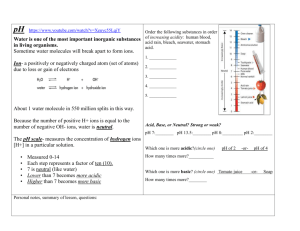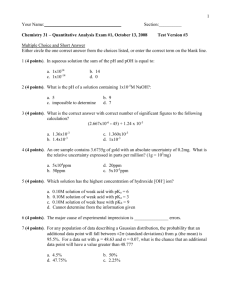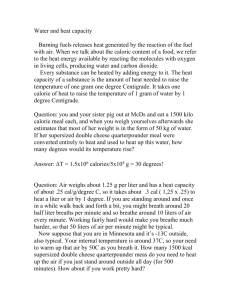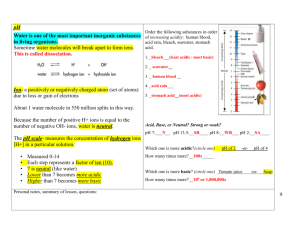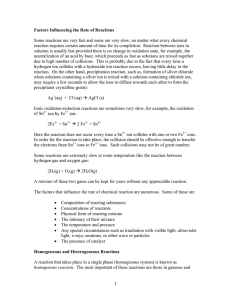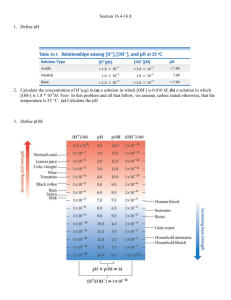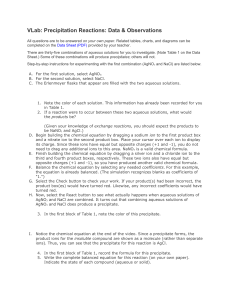Summary for Cation separation
advertisement
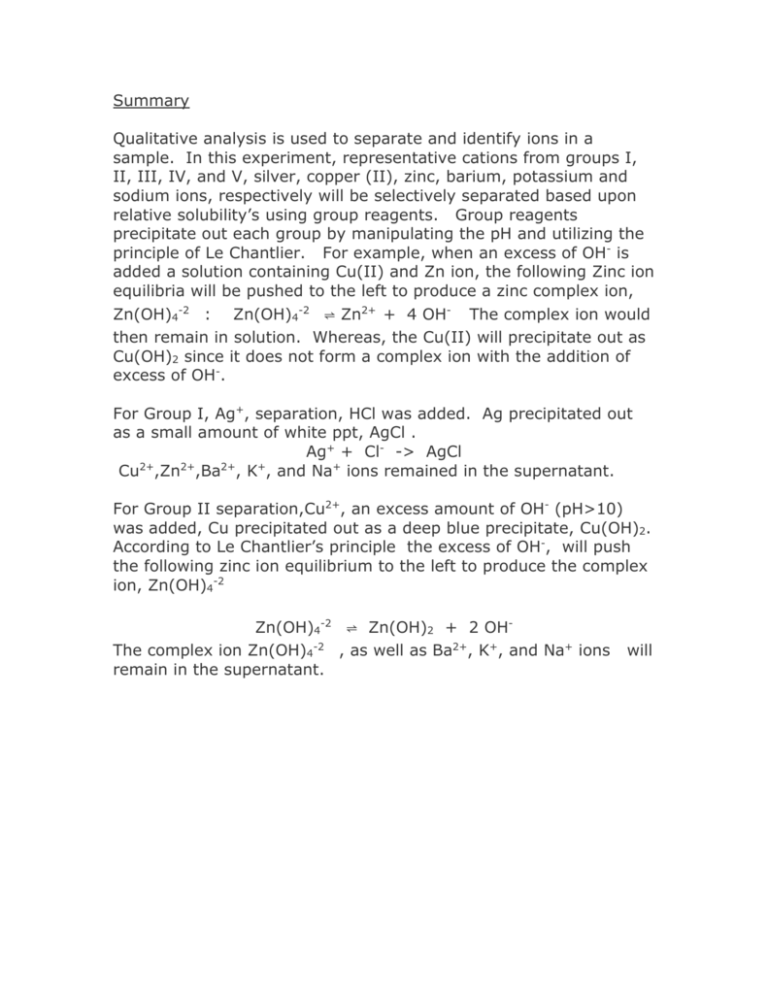
Summary Qualitative analysis is used to separate and identify ions in a sample. In this experiment, representative cations from groups I, II, III, IV, and V, silver, copper (II), zinc, barium, potassium and sodium ions, respectively will be selectively separated based upon relative solubility’s using group reagents. Group reagents precipitate out each group by manipulating the pH and utilizing the principle of Le Chantlier. For example, when an excess of OH- is added a solution containing Cu(II) and Zn ion, the following Zinc ion equilibria will be pushed to the left to produce a zinc complex ion, Zn(OH)4-2 : Zn(OH)4-2 ⇌ Zn2+ + 4 OH- The complex ion would then remain in solution. Whereas, the Cu(II) will precipitate out as Cu(OH)2 since it does not form a complex ion with the addition of excess of OH-. For Group I, Ag+, separation, HCl was added. Ag precipitated out as a small amount of white ppt, AgCl . Ag+ + Cl- -> AgCl 2+ 2+ 2+ + Cu ,Zn ,Ba , K , and Na+ ions remained in the supernatant. For Group II separation,Cu2+, an excess amount of OH- (pH>10) was added, Cu precipitated out as a deep blue precipitate, Cu(OH)2. According to Le Chantlier’s principle the excess of OH-, will push the following zinc ion equilibrium to the left to produce the complex ion, Zn(OH)4-2 Zn(OH)4-2 ⇌ Zn(OH)2 + 2 OHThe complex ion Zn(OH)4-2 , as well as Ba2+, K+, and Na+ ions remain in the supernatant. will

